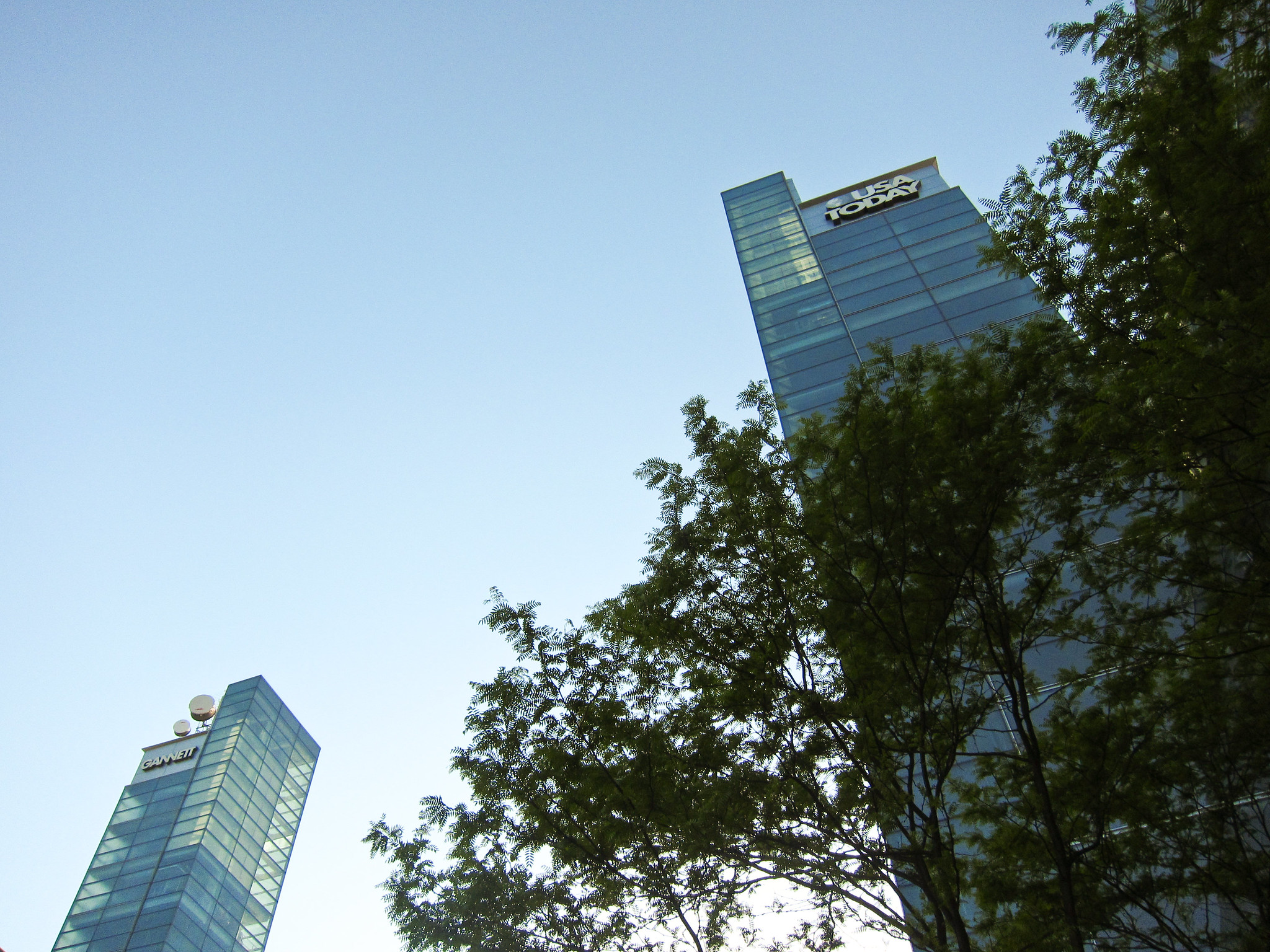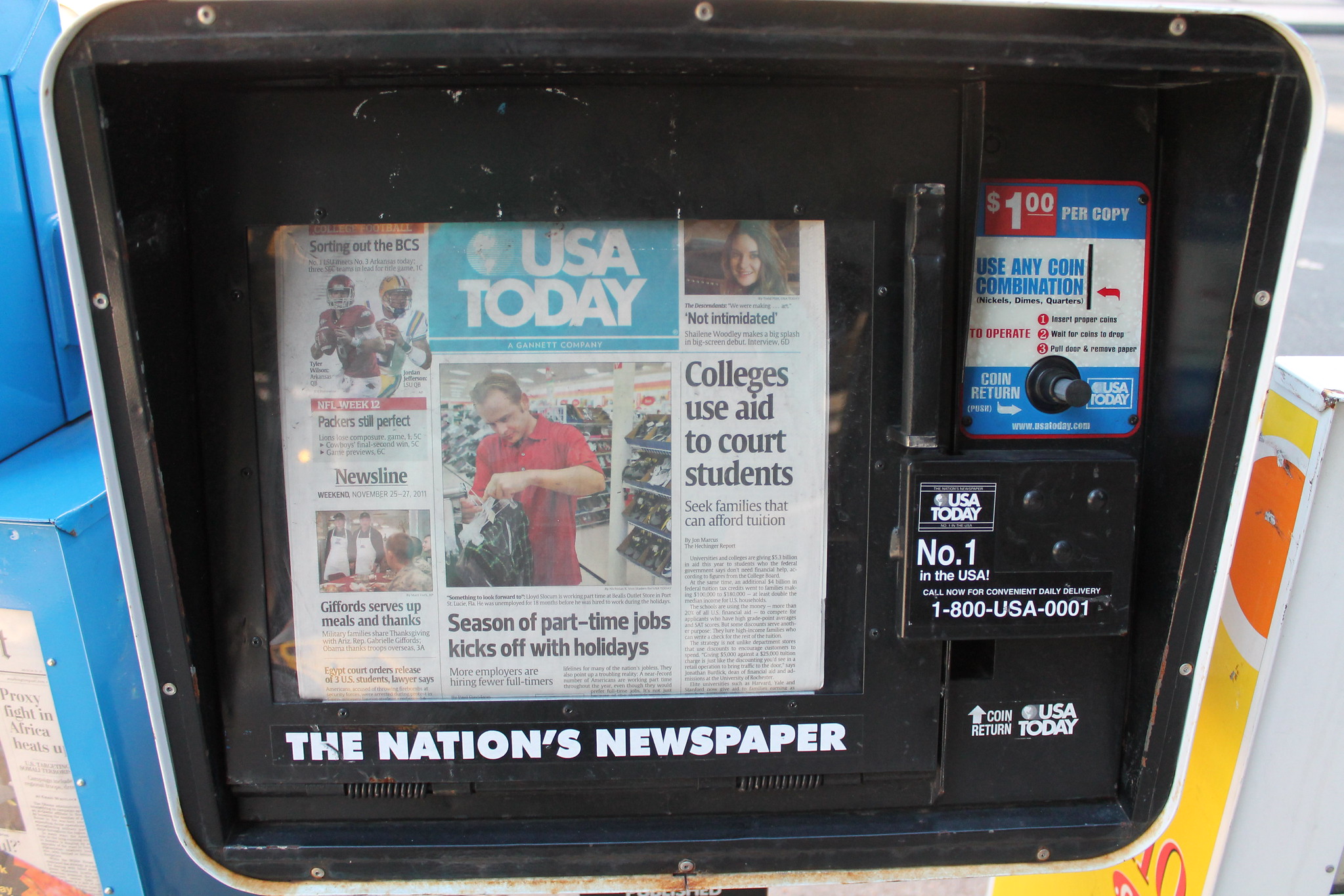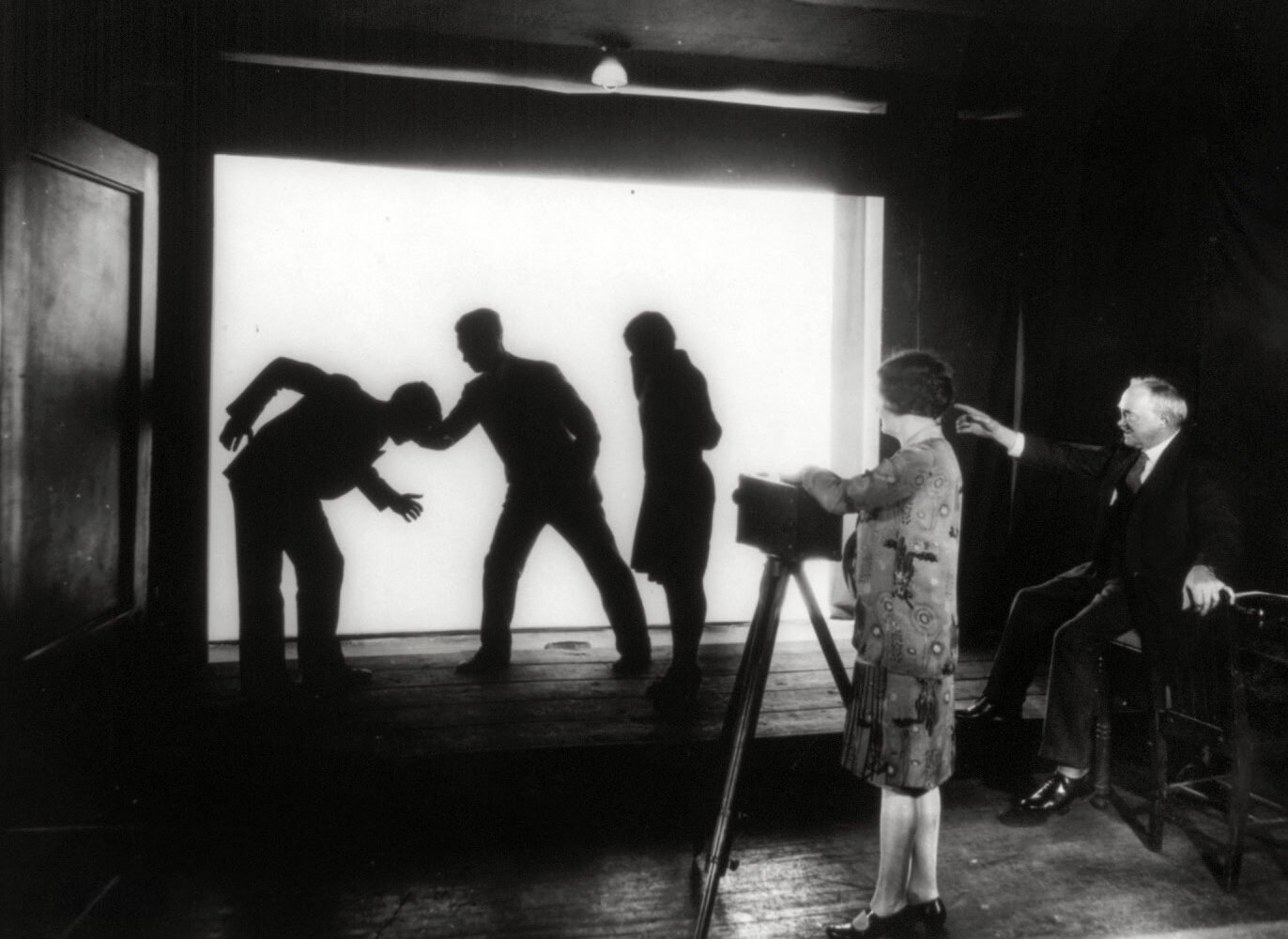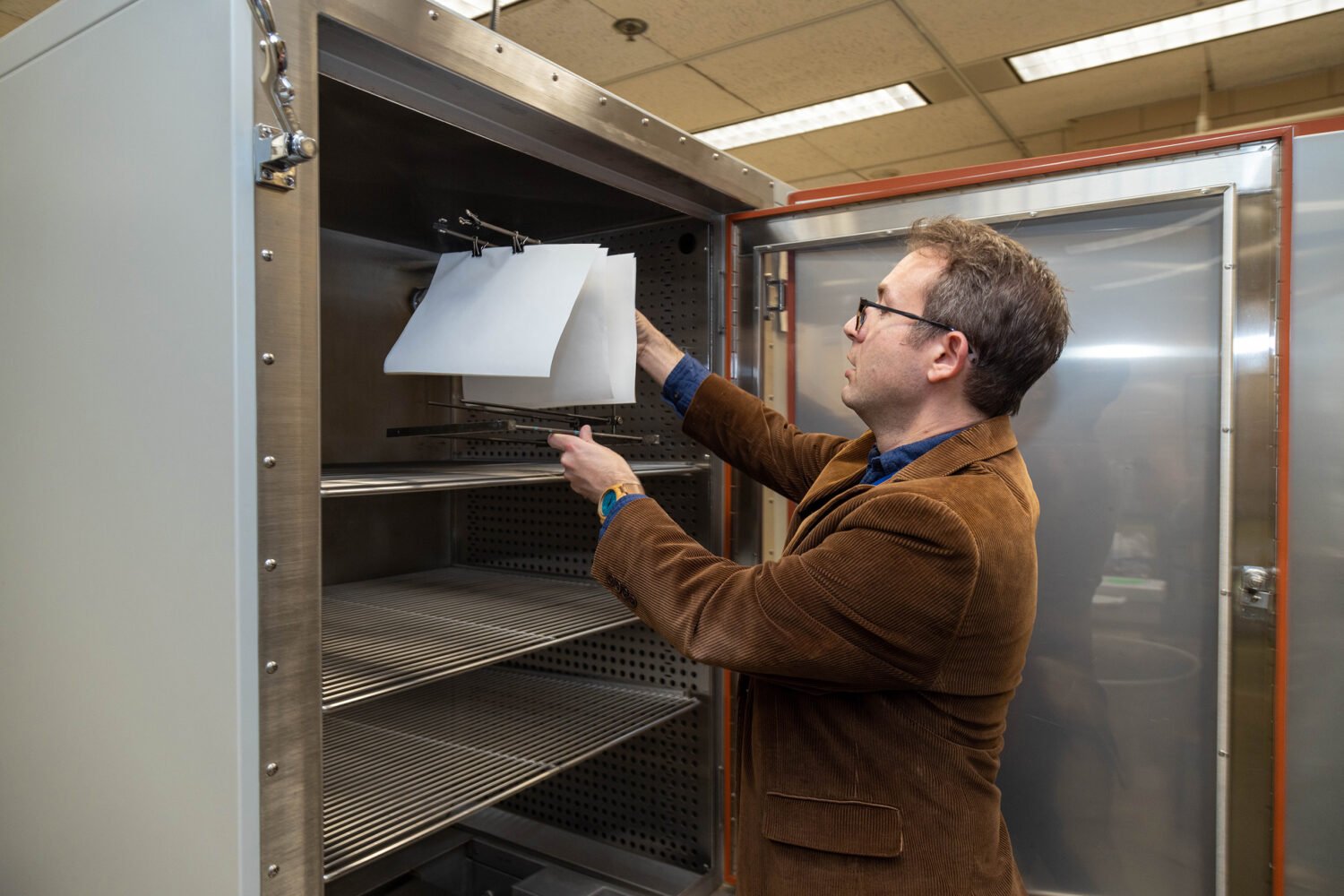The news that USA Today‘s print edition may end got me thinking about the ways that newspaper and its related entities contributed to the Washington streetscape. DC hasn’t had a Tribune Tower-like landmark newspaper building in my lifetime. The old Washington Post building was squat, beige, and not a huge loss to local architectural history when it got knocked down a couple years ago. The Washington Times building looks like a binder-clip factory. But from the 1980s until the early 2000s, USA Today‘s logo festooned a pair of silver towers that soared over the Potomac, and its zany, TV-shaped newspaper boxes added a Jetsons feel to Washington street furniture.
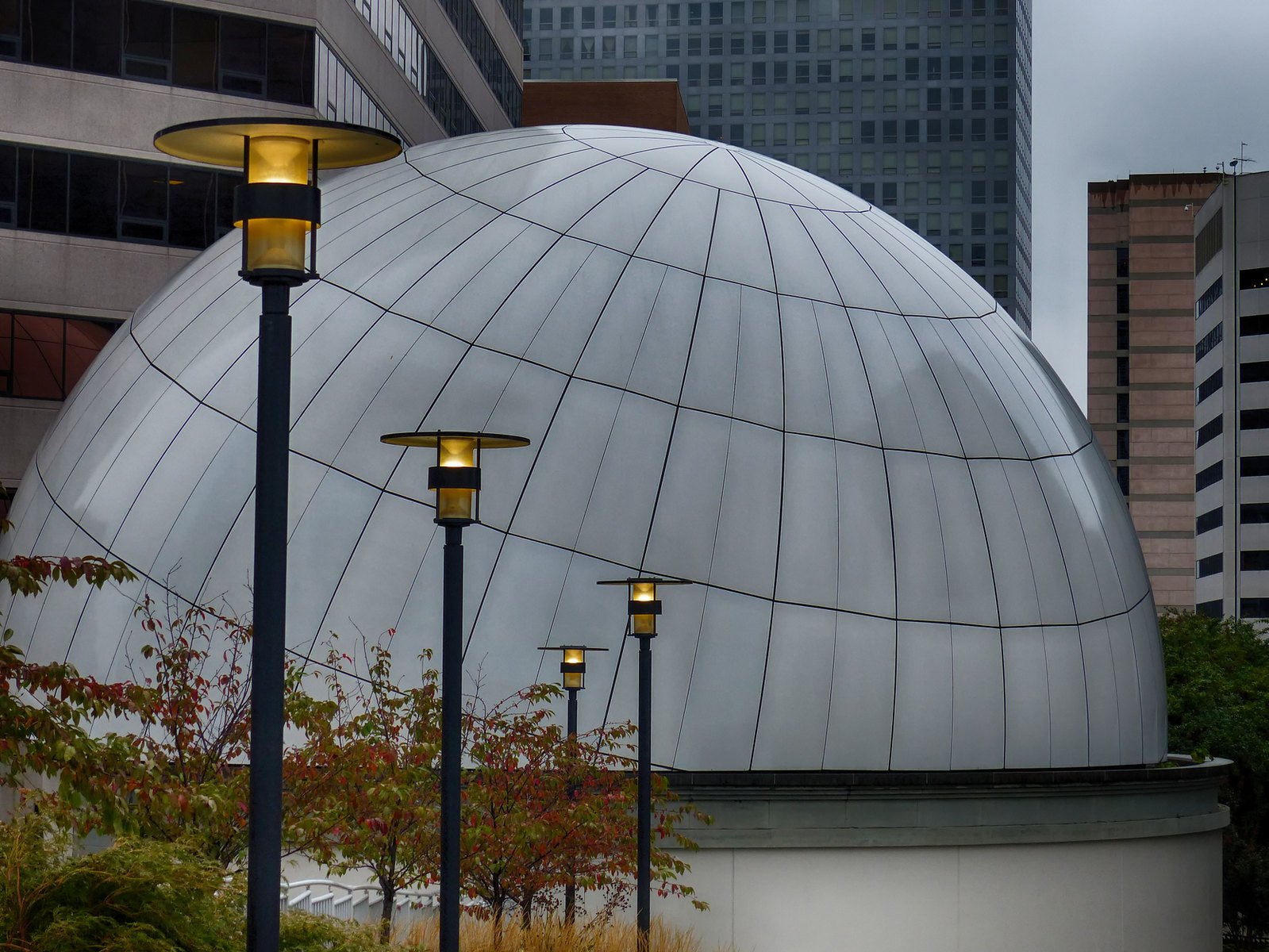
The money USA Today‘s parent company, Gannett, once printed alongside its many newspapers found its way (via chairman Al Neuharth’s Freedom Forum) into the original Newseum, across the street from the paper’s erstwhile Rosslyn HQ. That building had a what-the-hell-is-that tilted dome that evoked the paper’s old globe logo. The accompanying “Freedom Park,” opened along what was originally a botched highway, made Rosslyn seem sort of interesting, sprinkling artifacts like a bronze cast of the door to a cell that Martin Luther King Jr. once occupied, a memorial to journalists who’d been killed, and a section of the Berlin Wall among the Arlington neighborhood’s soulless canyons. The Post called the Newseum-Freedom Park combo “a surprising adaptation that gives Rosslyn a bit of zing” when it opened in 1997.
The second Newseum lumbered onto Pennsylvania Avenue in 2008 with a modest 74-foot tall marble tablet with the First Amendment stuck to the front. The New York Times described the building’s facade as a “high-tech billboard” that was meant to convey the changes in how we consumed information but whose “effect is as cringe-inducing as watching a neophyte nervously trying to navigate a computer screen.” Now it’s going to be a Johns Hopkins University building, and no one is quite sure what’s going to happen with the tablet.
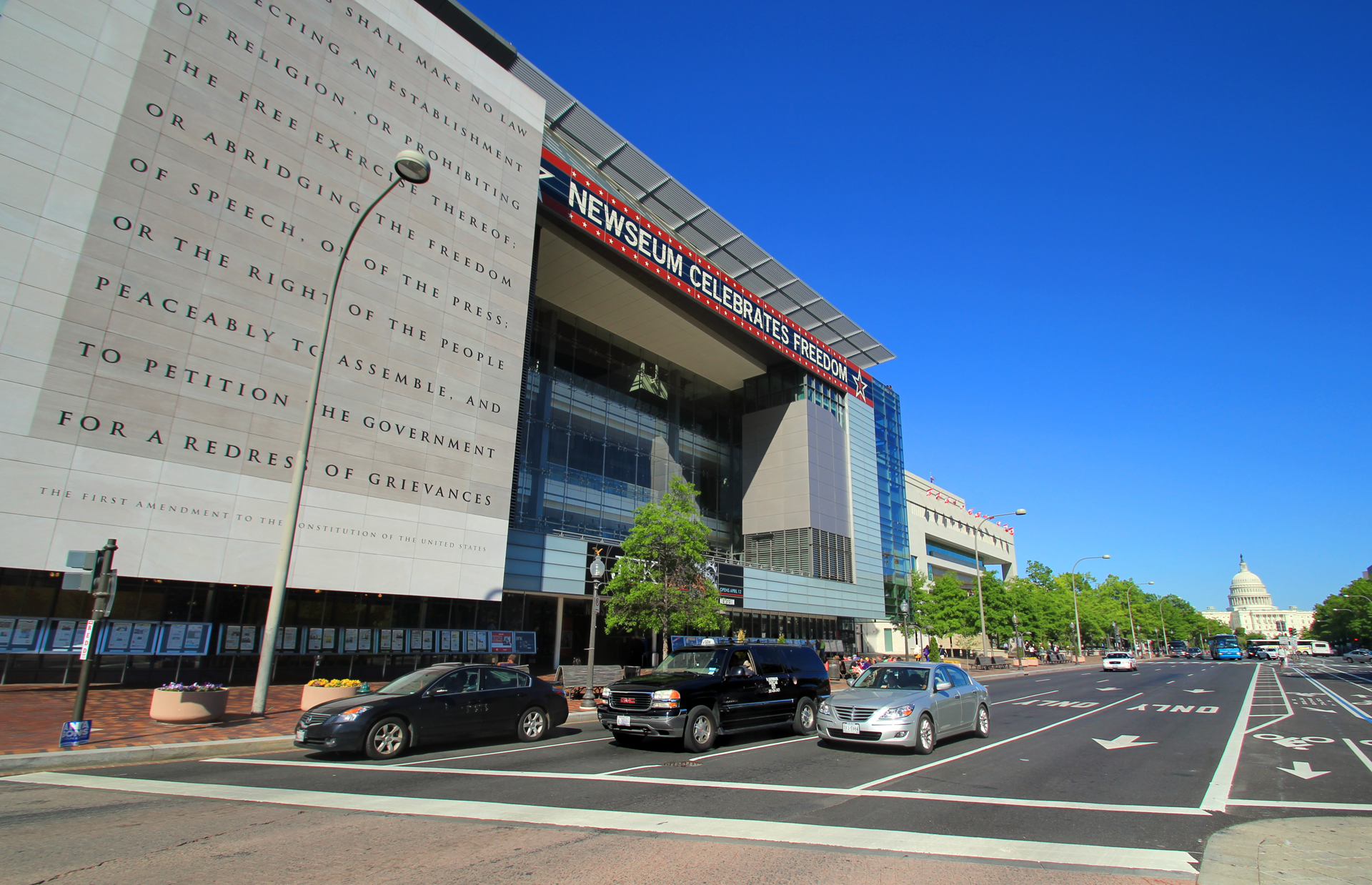
Gannett’s headquarters in McLean will soon be all that’s left of this visual history. USA Today, like Gannett, is now a tenant in the buildings that the company built at the turn of the century. Gannett split into two companies in 2015–Gannett, which still publishes newspapers, and TEGNA, which operates TV stations. TEGNA got the complex in the split, then sold it to a real-estate investment firm. If Google’s 2018 Street View of the building remains current, USA Today‘s big blue ball, which bounced into our lives in 2012, still looms over the Dulles Access Road.
